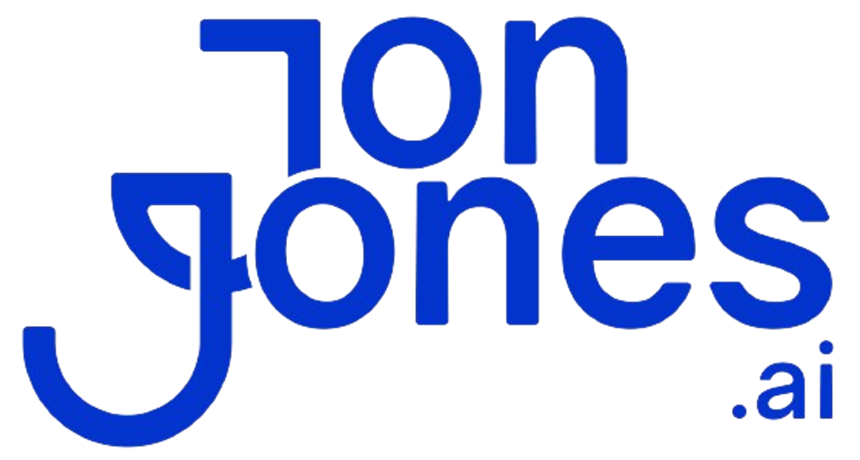Ever wished you could spot your next big opportunity before it slips away? We’re swimming in data, from sales logs to social chatter, but most teams are still stuck looking at last quarter’s numbers. Crazy, right?
Predictive analytics (using past data to forecast what’s next) blends historical trends, simple stats, and machine learning (algorithms that learn patterns) to highlight what’s coming.
Next, we’ll walk you through five key benefits. You’ll cut risks, save time, and tailor experiences that keep customers coming back.
5 Predictive Analytics Benefits for Business Success

Predictive analytics (using past data to forecast what’s next) brings together historical data, statistical models, and machine learning (algorithms that learn patterns) so you can see future trends, not just past results. We tie together descriptive analytics (what happened), diagnostic analytics (why it happened), and prescriptive analytics (what to do next) to give you a clear roadmap of customer behavior, market shifts, and operational risks before they strike.
We’re swimming in data, from sales logs to social posts to sensor feeds, and you need fast, reliable insights to stand out. Today’s user-friendly tools put these forecasting powers into the hands of business analysts, not just data scientists. And since about 90% of data is unstructured (emails, images, and other hard-to-read files), you get the edge by turning that noise into clear, actionable signals.
Here’s what predictive analytics does for you:
- Proactive risk mitigation: spot trouble before it hits.
- Smarter resource allocation: focus time and money where it counts.
- Personalized customer experiences: tailor offers to each buyer’s habits.
When you apply predictive analytics across your operations, you’ll catch stockouts before they happen, adjust staffing around peak demand, and craft offers that match individual buying patterns. Fewer surprises. Smarter budgets. Happier customers, all driven by data you already own.
Core Techniques in Predictive Analytics

So, predictive analytics (using past data to guess future results) leans on a few core algorithms. Each one solves its own forecasting puzzle.
When we pick the right method, you’ll turn raw numbers into clear, actionable insights.
| Technique | Description | Example Use Case |
|---|---|---|
| Regression (Linear & Logistic) | Regression (a model that finds links between variables) to predict a number (linear) or a category (logistic). | Forecasting monthly sales or spotting who might churn. |
| Decision Trees | Decision Trees (models that split data into branches based on features). They’re easy to read and handle gaps in data. | Sorting loan requests into low, medium, or high risk. |
| Neural Networks | Neural Networks (complex models with brain-like layers) that spot subtle patterns in big data. | Catching fraud by detecting odd transaction patterns. |
| Time Series Models (AR, MA, ARIMA) | Time Series Models (methods for data ordered by time) that catch trends, cycles, or seasonal shifts. | Predicting hourly call volume at a support center. |
| Ensemble Models (Boosting & Bagging) | Ensemble Models (combining multiple models) to cut errors and boost prediction stability. | Improving accuracy when targeting marketing campaigns. |
| k-Nearest Neighbors (k-NN) | k-Nearest Neighbors (k-NN, a simple model) that classifies new data by looking at its closest past examples. | Grouping customers by buying habits. |
Predictive Analytics Implementation Process

Predictive analytics (using past data to forecast future trends) starts with defining your main goals and mapping out the decisions you’ll make. We’ll help you pick clear targets, like spotting stock shortages or flagging high-risk loans, and decide how we’ll measure success.
Next, we gather all the data that fuels your forecasts. We pull records from:
- Sales logs
- Sensor readings
- Customer forms
- Third-party feeds
Then comes data preparation, which is often the longest step. We clean, normalize, and tag each data point so your models get high-quality inputs.
Feature engineering (turning raw numbers into meaningful signals) makes your data even smarter. For example, we might:
- Calculate rolling sales averages
- Score customer lifetime value
Once the data’s set, we choose the right algorithm. That might mean:
- Regression (a math model that predicts numbers)
- Decision trees (easy to explain)
- Neural nets (great at spotting complex patterns)
We split your data into training and validation sets and train the models with user-friendly tools. You’ll see initial accuracy scores and error rates. Then we refine everything with cross-validation (testing on different data slices) and parameter tweaks until the results hit your targets.
For that extra polish, we add domain-specific rules or prune the model trees to keep things stable. That helps each model behave like it does in the real world.
Finally, we deploy your model. Our IT team wraps it in an API or plugs it straight into your dashboards and apps. Whether you need real-time scoring or batch runs, we set it up so it’s just a click away.
We don’t stop there. We monitor your live models to catch accuracy drift, data shifts, and processing delays. If anything slips below your thresholds, we get alerts and retrain or adjust the model fast. That way, your predictive engine stays sharp and keeps delivering smart insights every day.
Top Predictive Analytics Software and Tools

Okay, if you need a full-featured package, we can turn to commercial suites like SAS Advanced Analytics, IBM Watson Studio, Microsoft Azure Machine Learning, and RapidMiner. SAS packs in powerful stats tools and data governance (rules that keep your data safe). IBM’s platform gives you drag-and-drop model building (creating predictive models that forecast outcomes) and easy team collaboration.
Microsoft Azure Machine Learning scales on demand, so you can mix real-time data (instant updates) right into your cloud setup. RapidMiner comes in desktop and enterprise editions with visual workflows and AutoML (automated machine learning) built in. These platforms handle large data volumes and different sources – so you don’t have to code every line yourself.
For an overview of top options, explore predictive analytics software.
Open source tools give you flexibility and no license fees. You can script custom pipelines with Python libraries like scikit-learn for classic algorithms and TensorFlow for deep learning (neural networks inspired by the brain). In R, packages like forecast for time series and caret for unified model training help you experiment fast.
RapidMiner Community Edition even pairs a free visual interface with community-driven extensions. Nice.
These open source predictive analytics tools are great for proof-of-concept projects or when you want to tweak every detail in code.
Picking the right tool comes down to your team’s skills, budget, and deployment needs. If coding isn’t your forte, a commercial platform with visual workflows and support might be your best bet. For max control and cost savings, open source lets you build everything from scratch.
Cloud-based solutions can also slash setup time by automating infrastructure (the servers and storage you don’t have to manage) and offering pay-as-you-go pricing. And don’t forget integration paths – APIs (software connectors) for real-time scoring, connections to your data lake (central storage), and built-in dashboards so your forecasts roll into daily operations without a hitch.
Industry Applications and Use Cases for Predictive Analytics

Finance
In finance, predictive analytics (using data to forecast what might happen next) spots suspicious transactions in under 40 milliseconds. Credit-scoring models sift through payment histories and customer profiles so you’ll know who’s likely to miss a payment. And churn-predictor tools flag customers at risk of leaving, letting you surprise them with a loyalty deal before they go. With these data-driven moves, you cut fraud and boost your bottom line.
Retail & E-commerce
In retail and e-commerce, we use demand forecasting (predicting how much stock you’ll need) to plan inventory and dodge empty-shelf headaches. Price-optimization models pick the best rate by watching competitors, customer habits, and even the weather. Promotion-effectiveness tools tell you if a 20%-off coupon will bump sales in each segment. Put it all together and you’ll keep shelves full, margins healthy, and campaigns on point.
Manufacturing & Maintenance
In manufacturing, quality-control and maintenance analytics keep your line humming. Machine sensors feed data into predictive-maintenance models (algorithms that warn you before a part breaks), so you can swap parts on your terms, before they fail. Siemens Healthineers saw uptime climb 36% by planning replacements early. Quality-control models also match sensor readings to proven patterns to catch defects fast, which means fewer breakdowns and a smoother workflow.
Healthcare & Insurance
In healthcare, forecasting tools use medical records, lab results, and lifestyle data to flag patients at risk for chronic conditions. Insurers run similar models to predict claim trends and set smarter premiums. Express Scripts applied predictive analytics to spot treatment non-adherence, and saved between $1,500 and $9,000 per patient. With these insights, you turn piles of health data into proactive care plans that keep people well and costs in check.
Marketing & Customer Analytics
In marketing, prediction tools help you guess how folks will react to your email blasts or ad buys. Churn models spot who’s about to unsubscribe so you can woo them back with a timely perk. Recommendation engines then serve up products matched to each shopper’s interests. When Staples put this to work, they scored a 137% return on investment, proof that smart data really drives growth.
Measuring ROI and Best Practices in Predictive Analytics

Predictive analytics (using data to forecast future outcomes) lets us link forecasts to real profit. For example, Staples saw a 137% return on investment when customer behavior models guided their marketing spend. Lenovo cut warranty costs by 10–15% with fault prediction tools, and Express Scripts saved $1,500–$9,000 per patient by spotting who might skip treatment. Tracking these wins proves the value and fuels your roadmap for better forecasting down the line.
Next, we set clear goals. First, define which decisions your model will support and how you’ll measure success. Then, put data governance in place (rules to keep your data clean) so inputs stay reliable. Agree on metrics like accuracy (how often predictions are right), precision (how precise those hits are), and recall (how many actual events we catch).
We also form cross-functional teams, you’ll need business leaders, data analysts, and IT working together. Build an analytics maturity model (a step-by-step plan) with budgets, roles, and a phased roadmap of new use cases. That keeps momentum from pilot to production.
Of course, forecasting has its hurdles:
- Data silos that block insights
- Inconsistent data quality
- Picking the right algorithm (like choosing the best recipe)
- Teams not trusting model outputs
We tackle these by centralizing data sources and running automated quality checks. Then we kick off small pilots to test accuracy and refine models. Finally, set up real-time dashboards (live charts showing model health) so you catch drift (when accuracy slips) early. You’ll adjust on the fly and keep everyone confident.
Results matter.
Emerging Trends and Future Directions in Predictive Analytics

Augmented analytics (tools that choose models and build features for you) now handles the heavy lifting. You get AI-driven predictive analytics (algorithms that forecast outcomes) without wrestling over code. Nice.
We’re also tapping real-time streaming (live data feeds) and deep learning (neural-network models) to tame messy, high-speed data, from sensor signals to social chatter. That means you catch shifts the moment they happen.
Next, edge computing (processing data on devices instead of a central server) moves scoring, where your model makes a prediction, right to the network’s edge. You cut latency and keep insights fresh even if your connection dips.
And to build trust, explainable models (ones that reveal how they decide) are taking off. Your team sees why each recommendation pops up, making audits a breeze.
But all this innovation brings privacy and ethics into the spotlight. We need clear data governance rules, strong encryption, and bias checks before any model training.
Regulatory pressure means you’ll set up audit trails, role-based access controls (limits on who sees what), and crystal-clear docs that show how each prediction was built. Nail these basics, and you protect customers while boosting confidence in your forecasts, so you can scale fast and with peace of mind.
Final Words
In the action, we defined predictive analytics foundations and set it apart from other analytics types. We broke down core methods like regression, decision trees, and neural nets.
We mapped the full implementation process, showed top tools for every budget, and shared industry cases from finance to healthcare along with ROI tips.
Now you can integrate predictive analytics to make smarter moves, cut manual work, and scale faster. You’re set for growth ahead.
FAQ
What is predictive analytics?
Predictive analytics uses historical data, statistical algorithms, and machine learning to forecast future events instead of just describing the past.
What are the core predictive analytics techniques?
The core predictive analytics techniques include regression analysis for continuous or categorical forecasts, decision trees that segment data, and time series forecasting to model trends over time.
What tools support predictive analytics?
Predictive analytics tools range from commercial suites like SAS Advanced Analytics and IBM Watson Studio to open source options like Python’s scikit-learn and R’s forecast package.
How does AI and machine learning fit into predictive analytics?
AI and machine learning power predictive analytics by training algorithms—such as neural networks and ensemble models—to learn patterns from data, boosting forecast accuracy and adapting to new information.
What are real-world examples of predictive analytics?
Real-world predictive analytics examples include credit scoring in finance, demand forecasting in retail, preventive maintenance in manufacturing, churn prediction in marketing, and health risk modeling in healthcare.
Is there a course to learn predictive analytics?
Predictive analytics courses cover stats concepts, machine learning methods, and hands-on tool training—often via platforms like Coursera, edX, or Udacity—to equip you with end-to-end forecasting skills.
How does predictive analytics differ from prescriptive analytics?
Predictive analytics forecasts potential outcomes using data and models, while prescriptive analytics recommends actions and strategies based on those forecasts to optimize your decisions.






